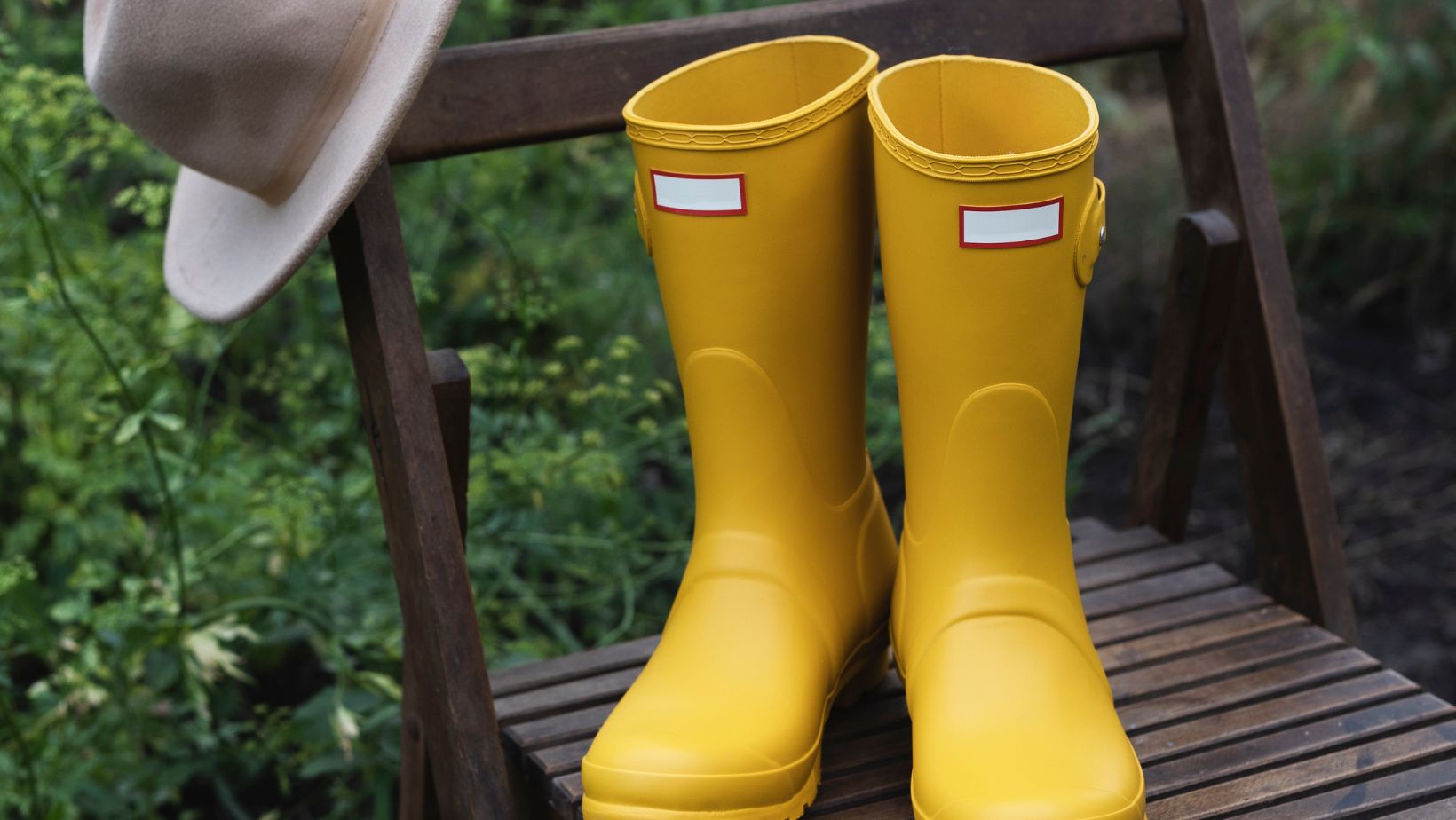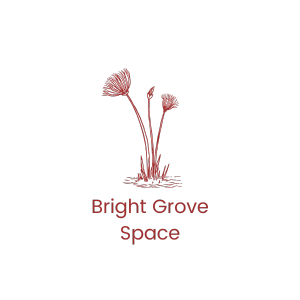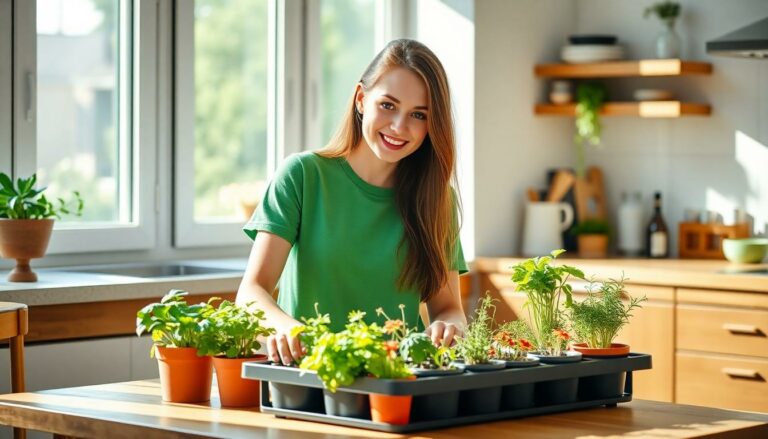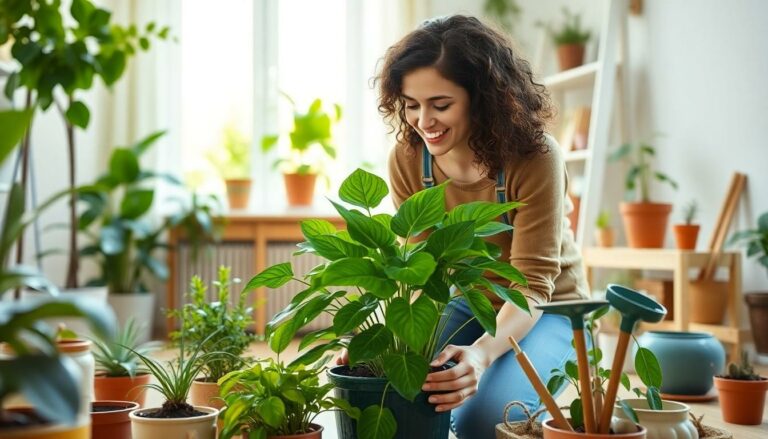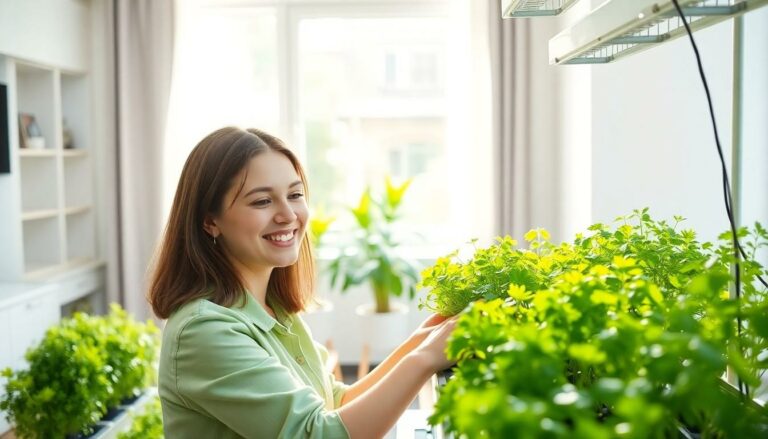Imagine stepping into your home and being greeted by a lush garden, all without the dirt, bugs, or back-breaking labor. Indoor hydroponic gardening makes this dream a reality. This innovative method allows anyone to grow fresh herbs and vegetables right in their living room, kitchen, or even a cozy closet. Who knew that growing your own food could be as easy as binge-watching your favorite show?
Indoor Hydroponic Gardening
Indoor hydroponic gardening is a method of growing plants without soil, using nutrient-rich water instead. This innovative approach allows individuals to cultivate a variety of plants indoors, maximizing space and convenience.
History of Hydroponics
The origins of hydroponics date back to ancient civilizations, where records show that the Hanging Gardens of Babylon utilized soilless methods. In the 17th century, scholars like Sir Francis Bacon supported the idea of using water for plant growth. The term “hydroponics” emerged in the 1930s, derived from the Greek words for water and labor. Researchers developed modern techniques during the 20th century, refining the practice for commercial applications. Today, hydroponics forms a vital part of sustainable agriculture.
Benefits of Indoor Hydroponic Gardening
Indoor hydroponic gardening offers several notable benefits. Space efficiency characterizes this method, allowing individuals to grow plants in limited areas. Minimal water usage supports environmental sustainability, as hydroponics typically requires up to 90% less water than traditional gardening. Convenience ranks high, as indoor gardeners can cultivate food year-round without the unpredictability of outdoor conditions. Reduced pest infestations can improve plant health, and the absence of soil eliminates the need for tilling. Overall, this approach enables a fresh and sustainable food source, enhancing nutrition and well-being.
Types of Indoor Hydroponic Systems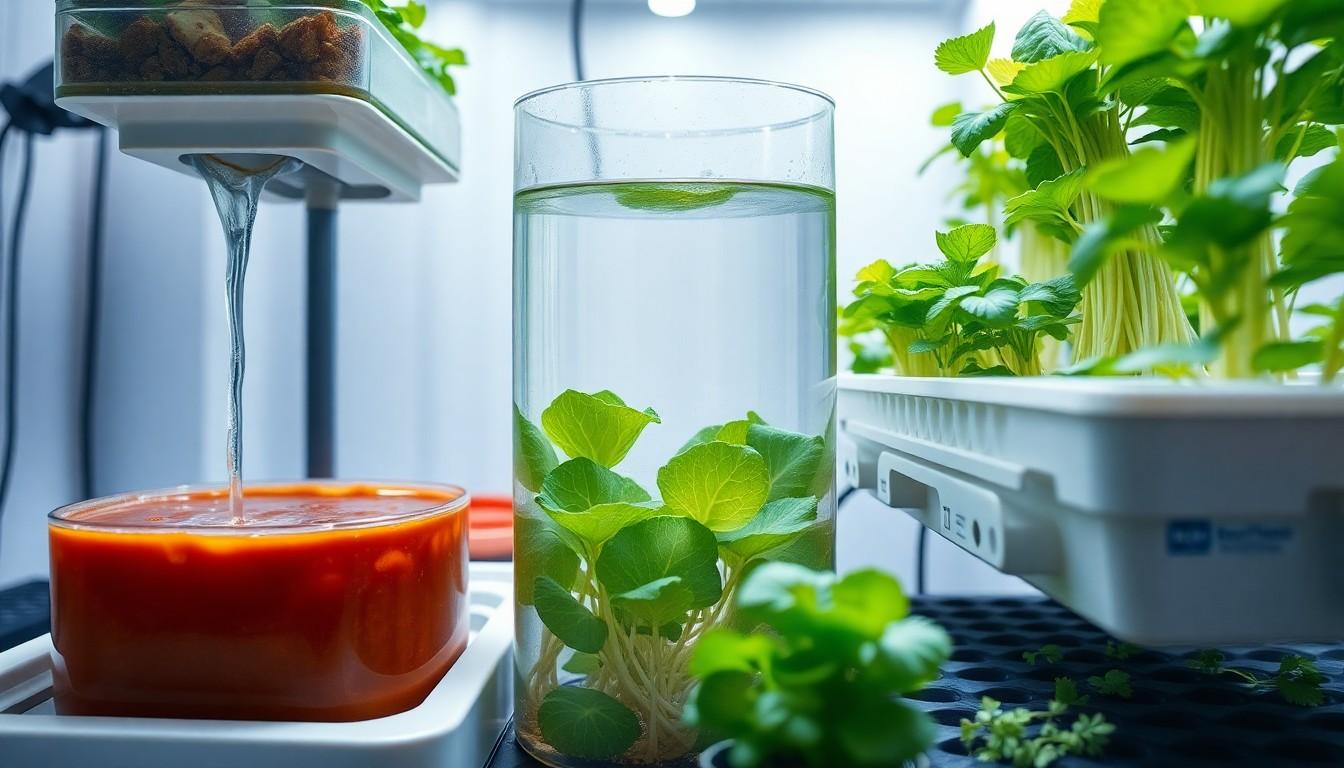
Various indoor hydroponic systems cater to different plant needs and space considerations. Each system offers unique advantages that can suit any indoor gardener’s preference.
Nutrient Film Technique (NFT)
The Nutrient Film Technique relies on a thin film of nutrient solution flowing continuously over the roots of plants. An inclination typically ensures that the solution drains into a reservoir for recirculation. Users benefit from efficient nutrient uptake while minimizing water waste. This technique suits fast-growing plants such as lettuce and herbs. Prioritizing oxygenation, NFT boosts root health, resulting in higher yields per square foot.
Deep Water Culture (DWC)
Deep Water Culture submerges plant roots in a nutrient-rich water solution, allowing them to absorb essential nutrients directly. Air stones or diffusers oxygenate the water, ensuring roots receive sufficient oxygen. This system is ideal for beginners due to its straightforward setup and low maintenance. Effective for growing leafy greens and some fruiting plants, DWC encourages rapid growth and high yields. Nutrient delivery remains constant, optimizing plant health and vigor.
Ebb and Flow Systems
Ebb and Flow Systems operate through periods of flooding and draining the grow tray with nutrient solution. A timer controls the water pump, ensuring plants receive nutrients and oxygen in alternating cycles. This versatility allows for a wide variety of plants, from herbs to larger vegetables. Users appreciate the ability to customize the light and nutrient conditions. By enhancing root oxygenation, this system supports plant robustness and productivity in indoor gardens.
Essential Components for Success
Understanding the essential components of indoor hydroponic gardening ensures optimal growth and productivity. Each element plays a crucial role in nurturing healthy plants.
Grow Lights
Grow lights simulate sunlight, making them vital for indoor gardening. Different types, such as LED and fluorescent lights, offer varying spectrums to meet plant needs. LED lights provide energy efficiency and longer lifespans while emitting less heat, making them popular among indoor gardeners. Fluorescent lights are effective for seedlings and smaller plants, promoting strong growth during the germination phase. Positioning lights approximately 12 to 24 inches above plants ensures adequate light without causing heat stress. Balancing light duration to 12 to 16 hours per day enhances photosynthesis and overall plant health.
Nutrient Solutions
Nutrient solutions supply essential minerals and vitamins for plant growth. Hydroponic systems require precise formulations that contain nitrogen, phosphorus, potassium, calcium, and magnesium. Liquid fertilizers designed for hydroponics dissolve easily in water, offering efficient nutrient delivery. Regular monitoring of pH levels between 5.5 and 6.5 helps plants absorb nutrients effectively. Diluting nutrients according to manufacturer’s guidelines prevents over-fertilization, which could harm plant health. Adapting feeding schedules according to plant growth stages keeps nutrients in sync with their development.
Growing Mediums
Growing mediums provide support and stability for plants in hydroponic setups. Options vary, including coconut coir, rock wool, and clay pellets, each offering unique benefits. Coconut coir retains moisture while allowing good drainage, ideal for roots. Rock wool provides excellent aeration but requires careful handling due to its absorptive properties. Clay pellets offer drainage and aeration, promoting healthy root development. Ultimately, selecting a suitable medium contributes significantly to overall plant health and growth rates, enhancing the hydroponic gardening experience.
Setting Up Your Indoor Hydroponic Garden
Creating an indoor hydroponic garden requires careful planning and the right components. This section details how to choose a location, gather equipment, and set up the system.
Choosing the Right Space
Selecting a suitable space is essential for indoor hydroponic gardening. Consider areas with ample natural light such as windowsills, or opt for spaces where grow lights can be installed. Ensure the location offers an appropriate temperature range, typically between 65°F and 75°F, to optimize plant growth. Spaces should also be easily accessible for maintenance and harvesting. Ventilation plays a critical role in preventing mold and ensuring healthy air circulation around the plants.
Equipment Needed
Gathering the right equipment streamlines the gardening process. Essential items include a hydroponic system that fits available space, such as NFT, DWC, or Ebb and Flow. Invest in grow lights, preferably LED or fluorescent, for adequate light exposure. Nutrient solutions provide essential minerals, and a pH meter ensures proper balance. Consider adding grow trays, a water pump, and timers for automated watering. These tools support efficient watering and optimal growth conditions throughout the garden.
Step-by-Step Setup Process
Setting up the indoor hydroponic garden involves several straightforward steps. Begin by assembling the hydroponic system according to the manufacturer’s instructions. Fill the reservoir with water and mix in the nutrient solution, adjusting the pH as needed. Next, place the growing medium in the grow trays to support the plants effectively. Plant seedlings or seeds into the medium, ensuring adequate spacing for growth. Finally, position the grow lights above the plants, maintaining proper height for optimal light exposure. Regular monitoring of water levels and nutrient concentrations promotes healthy plant development.
Common Challenges and Solutions
Indoor hydroponic gardening presents unique challenges. Identifying and addressing these obstacles ensures successful plant growth.
Nutrient Imbalance
Nutrient imbalance often occurs when plants receive incorrect nutrient ratios. This condition leads to deficiencies or toxicities that stunt growth. Regular testing of nutrient solutions plays a crucial role in maintaining balanced levels. Adjustments based on plant needs help optimize growth. Using high-quality nutrient solutions tailored to specific plants promotes efficiency. Following manufacturer guidelines on dosages minimizes the risk of imbalance.
Pests and Diseases
Pests and diseases can still invade indoor hydroponic systems. Common pests include aphids, spider mites, and whiteflies. Implementing regular inspections helps catch infestations early. Insecticidal soaps or neem oil effectively control these unwanted visitors. Fungal diseases may also develop in overly damp environments. Maintaining proper humidity levels and ensuring good airflow reduces disease likelihood. Quarantining new plants before introducing them helps protect existing crops.
Environmental Control
Environmental control significantly impacts plant health in hydroponic systems. Incorrect light exposure can hinder growth, so selecting appropriate grow lights is essential. Maintaining ideal temperatures between 65-75°F supports healthy plant functions. Humidity levels ranging from 40-70% facilitate optimal growth and nutrient uptake. Automated systems assist in monitoring and adjusting these variables effectively. Proper ventilation prevents heat accumulation and promotes air exchange. Enhancing environmental control boosts overall plant health and yield.
Modern Solution
Indoor hydroponic gardening offers a modern solution for those looking to grow fresh produce in limited spaces. By utilizing nutrient-rich water and innovative systems, it eliminates many of the challenges associated with traditional gardening.
With the ability to cultivate year-round and minimal water usage, this method not only promotes sustainability but also enhances plant health. As gardeners become familiar with the essential components and techniques, they can effectively navigate common challenges, ensuring a bountiful harvest.
Embracing indoor hydroponic gardening can transform how individuals approach growing their food, making it accessible and rewarding for everyone.
